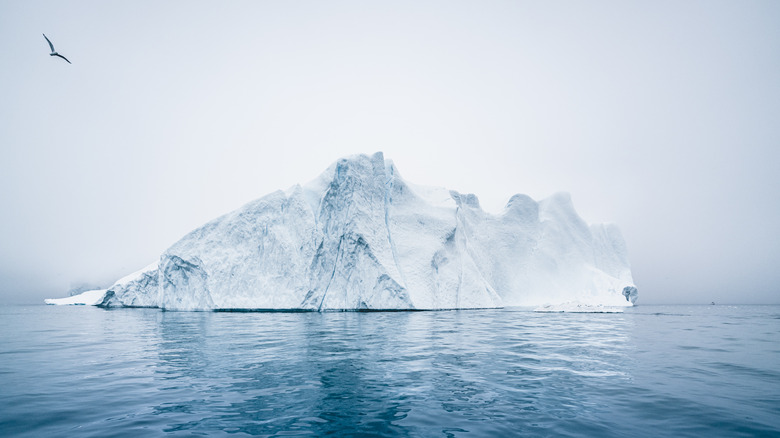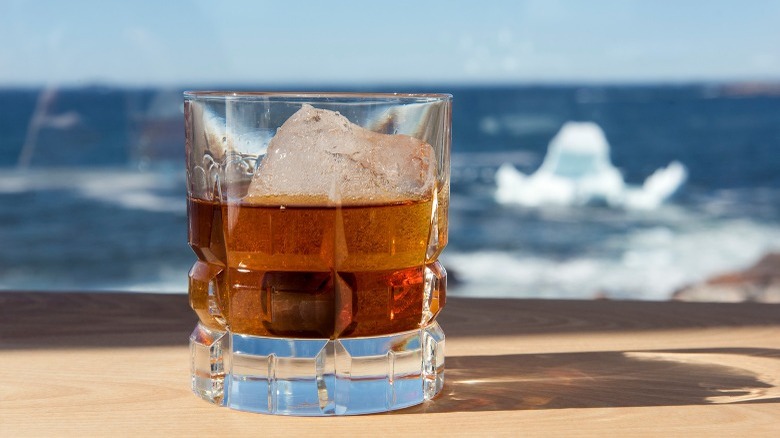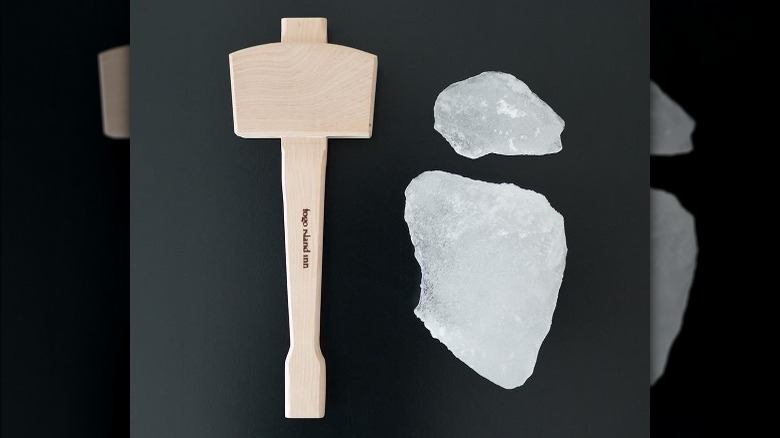Canadian Icebergs May Be Floating In Your Cocktail On Your Next Visit
If you find yourself craving a drink on the island of Newfoundland in Canada, the ice in your beverage at bars and restaurants may just be directly cut from an ancient iceberg. As the weather warms up and icebergs break off from their glaciers, they drift towards the region — and local residents have decided to make use of them by chipping them down and adding them to drinks.
Although these iceberg chunks can cool off any beverage, they're most commonly served in cocktails. The alcohol in the drinks can act as something of a sterilizer for the iceberg pieces, ensuring that there are no outside contaminants hiding in the ice. One company, Iceberg Vodka, even creates its spirits directly from water derived from icebergs if you want to double down on the experience. Or, if you're more of a beer drinker, some companies use iceberg water as an ingredient. An upscale hotel, the Fogo Island Inn, offers the unique ice in drinks at its bar.
The taste of iceberg ice is a little different from the standard ice cubes you're used to. In fact, they reportedly don't taste like much at all. One theory suggests that because the glaciers the icebergs stem from a time before so much pollution, the ice secured inside is free from contaminants, giving it a cleaner, smoother taste. The nearly flavorless ice will allow all the flavors of your cocktails to shine through, acting simply as a cooling agent.
Some iceberg pieces just wash up on shore
The idea of harvesting ice from icebergs reportedly gained more popularity in the Newfoundland and Labrador areas around 2016. Both alcohol and bottled water made from icebergs began to garner more acclaim and are now commercially sold. Before then, though, it was simply a regional specialty.
Although many iceberg ice harvesters venture out on boats to grab chunks and bring them to land, others are patient and simply wait for them to wash up on beaches. These smaller chunks can be rinsed off and cut into smaller pieces for use in beverages at home.
Still, this method isn't ideal for the mass production of bags of iceberg ice. In order to harvest larger chunks of icebergs, companies must be licensed and pay fees based on the amount of ice they retrieve. But once that license has been acquired, sailors can head out on the water to grab some of that ancient ice.
How is the ice harvested?
To carve out the ice, harvesters first sail out to "Iceberg Alley" — an area off the east coast of the island ofNewfoundland. The icebergs along this region are mostly from Greenland's glaciers, though some are from Canada's Arctic.
Iceberg season takes place between late April to early June, and that's when most of the harvesting takes place. As large chunks of ice break off of these icebergs, harvesters bring the pieces to shore. Then, once the pieces have been removed from the water, the iceberg pieces are broken up into much smaller, ice cube-sized chunks.
To break up the ice, the harvesters typically use a hammer or mallet, which they use to strike a thin pin, breaking the ice. Then, once broken up, the ice can be bagged and sold. Bags can be purchased from local general stores in Newfoundland, though plenty of local bars and restaurants use the ice in their beverages.


